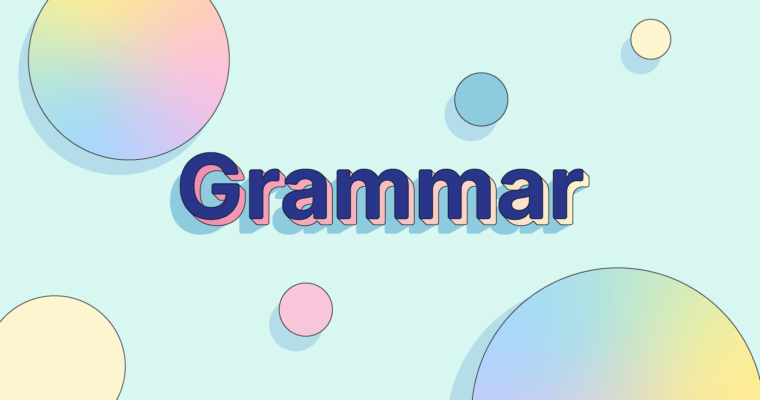
Knowing the different kinds of sentences—and how to form them correctly—ensures you can always communicate what you mean and is a huge advantage in communication. It’s also crucial when writing to change up the types of sentences you use to keep things fresh. That’s why understanding the types of sentences can make a big difference.
In this article, we discuss eight types of sentences: four kinds of sentences according to function and four types of sentences according to structure. We explain the grammar rules for each sentence type and how to use them so you’ll be aware of all your choices when composing a new sentence.
How many types of sentences are there?
Generally, types of sentences are categorized by function and structure. There are four types of sentences based on function, such as questions and commands. There are also four types of sentences based on sentence structure, such as simple and complex. Remember that these categories are not mutually exclusive; for example, a question that’s a sentence can also be complex..
In this article, we discuss all eight types of sentences, divided into categories. Additionally, there is a special type of complex sentence, the conditional sentence, so some believe there are five types of sentences based on structure. You can read all about conditional sentences here, but we won’t discuss them in this article.
4 types of sentences according to function
There are four kinds of sentences based on their function, such as making a statement or asking a question. These kinds of sentences are usually distinguished by their end of sentence punctuation, whether a period, question mark, or exclamation mark. We discuss these kinds of sentences in detail below, but here’s a short list:
- declarative
- interrogative
- imperative
- exclamatory
1 Declarative sentences
Declarative sentences are a good place to start because they’re the standard. Essentially, a declarative sentence is a simple statement used to communicate a fact, an opinion, an observation, or an explanation.
Declarative sentences always end in a period.
Declarative sentence examples
- Bears don’t eat when they hibernate.
- He didn’t like the movie as much as his partner did.
- In my opinion, James Joyce’s Ulysses is too long.
2 Interrogative sentences
Questions are known formally as interrogative sentences. These sentences request more information in the form of answers, usually to confirm something or fill in missing information. Interrogative sentences can be tricky because they sometimes require putting the verb before the subject or using an auxiliary verb like do.
Interrogative sentences end with a question mark.
Interrogative sentence examples
- What is your next class?
- Did you see the fireworks last night?
- We’re going in the right direction, aren’t we?
3 Imperative sentences
Imperative sentences are commands, instructions, or advice you give to others to tell them what to do. In imperative sentences, the subject is often assumed. It’s usually obvious that the subject is whomever the sentence is directed at, so the subject can be dropped and the reader can assume the missing subject is you.
Imperative sentences usually end in a period, but they can also use an exclamation point if they’re emphatic.
Imperative sentence examples
- Sweep the floor before you mop it.
- Please type these notes and then email me a copy.
- Don’t hang up!
4 Exclamatory sentences
Usually, exclamatory sentences behave just like declarative sentences, except with more emotion or urgency. Exclamatory sentences also include interjections like “Ouch!” or “Yippee!” to convey sudden emotion.
We show this extra emotion with an exclamation mark, also known as an exclamation point, at the end of the sentence. Consider the difference between these two sentences:
- I ate a snail.
- I ate a snail!
The first is a bland statement, communicating a fact. The second has an emotional connotation as if the speaker is shocked, proud, or disgusted—emotions that don’t exist in the first sentence.
Exclamatory sentence examples
- Myra had the baby!
- Thanks! You saved our wedding!
- Yikes! That’s a giant spider!
4 types of sentences according to structure
Based on the number and types of clauses, a sentence can be one of four types. It’s important to understand the difference between independent and dependent clauses, as these types of clauses define the kind of sentence structure. We go into the details of each type below, but here’s a quick list:
- simple
- compound
- complex
- compound-complex
1 Simple sentences
Simple sentences are just like the name says—simple. They contain one independent clause. Be careful, though, because independent clauses can sometimes have multiple subjects or predicates.
Simple sentence examples
- Today is my only day off this week.
- Who sings “I Remember Everything”?
- Khalid and I play soccer together.
2 Compound sentences
Unlike simple sentences, compound sentences contain more than one independent clause. The independent clauses are joined either by a semicolon ( ; ) or by a coordinating conjunction. You might recognize coordinating conjunctions as the FANBOYS: for, and, nor, but, or, yet, and so.
Compound sentence examples
- We wanted to eat fast food, but our parents made dinner instead.
- My cat sleeps on the couch during the day, and my dog sleeps on it at night.
- The lightning flashed; the thunder roared.
3 Complex sentences
Complex sentences can get a little confusing because they use a subordinate clause, a special type of clause that contains a subject and a predicate but cannot be used alone. A subordinate clause must combine with an independent clause in the same sentence. They are sometimes called dependent clauses because they depend on another clause to make a complete sentence.
Subordinate clauses and complex sentences can be identified by the use of a subordinating conjunction like because, while, or if. Use a comma to separate the clauses only if the subordinating clause comes first.
Complex sentence examples
- The marching band paraded through the street while I was sleeping.
- When I was your age, we used smoke signals instead of texts.
- I’ll have that if you’re not going to eat it.
4 Compound-complex sentences
As the name suggests, compound-complex sentences are both compound and complex at the same time. In other words, they contain a subordinating clause and more than one independent clause.
Compound-complex sentence examples
- Say goodbye to grandma, and then we’ll leave before it starts snowing.
- Hollywood is making my favorite game into a movie because of the fan support, but it will be rated PG-13.
- If the bees die out, many plants will stop reproducing and ecosystems will collapse.
Types of sentences FAQs
How many types of sentences are there?
Generally, types of sentences are categorized by function and structure. There are four types of sentences based on function, such as questions and commands. There are also four types of sentences based on sentence structure, such as simple and complex.
What are the 4 types of sentences according to function?
The four types of sentences according to function are declarative (statements), interrogative (questions), imperative (commands), and exclamatory (interjections and emotional statements).
What are the 4 types of sentences according to structure?
The four types of sentences according to structure are simple (one independent clause), compound (more than one independent clause), complex (a subordinating clause and one independent clause), and compound-complex (a subordinating clause and more than one independent clause).


